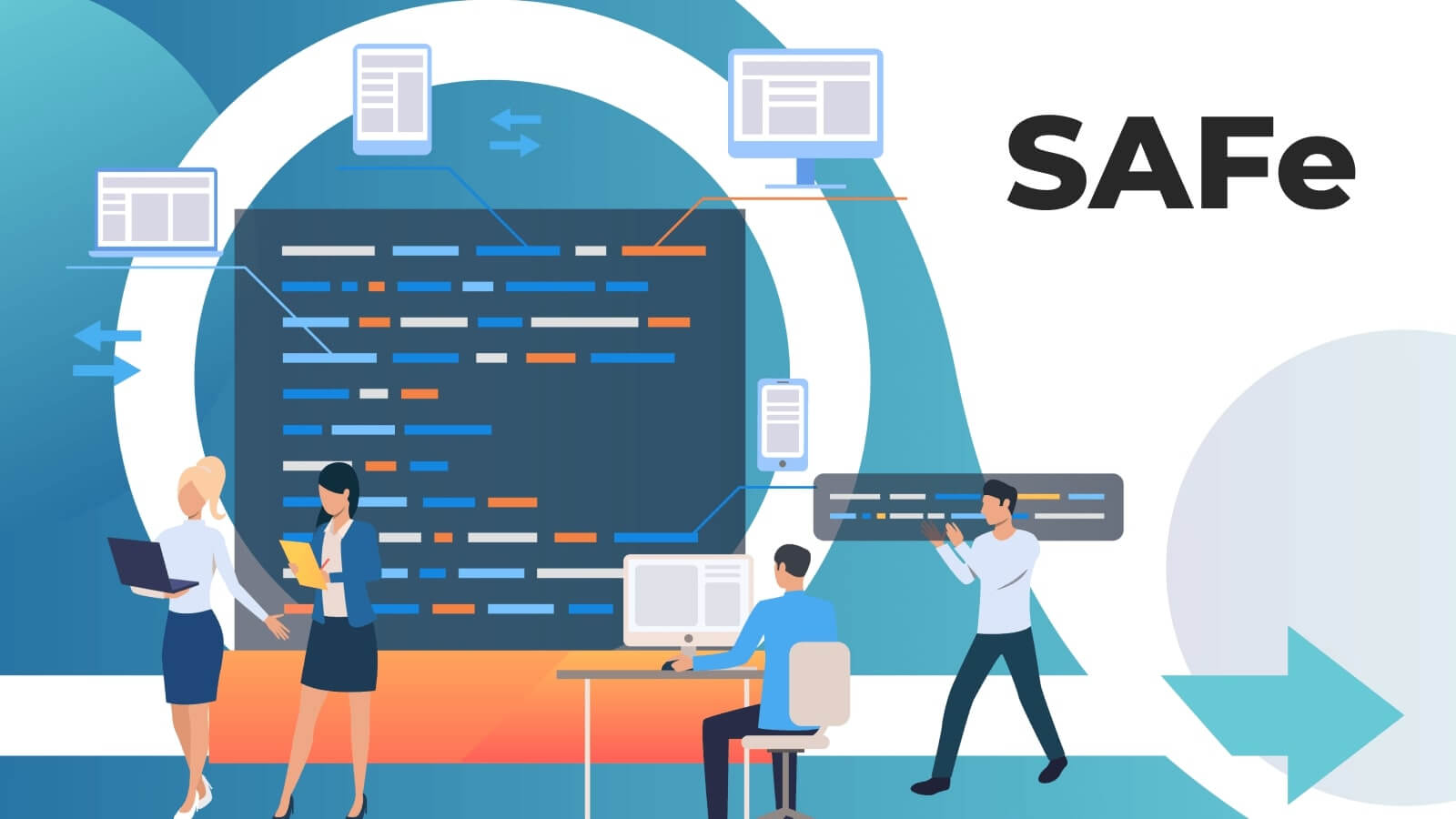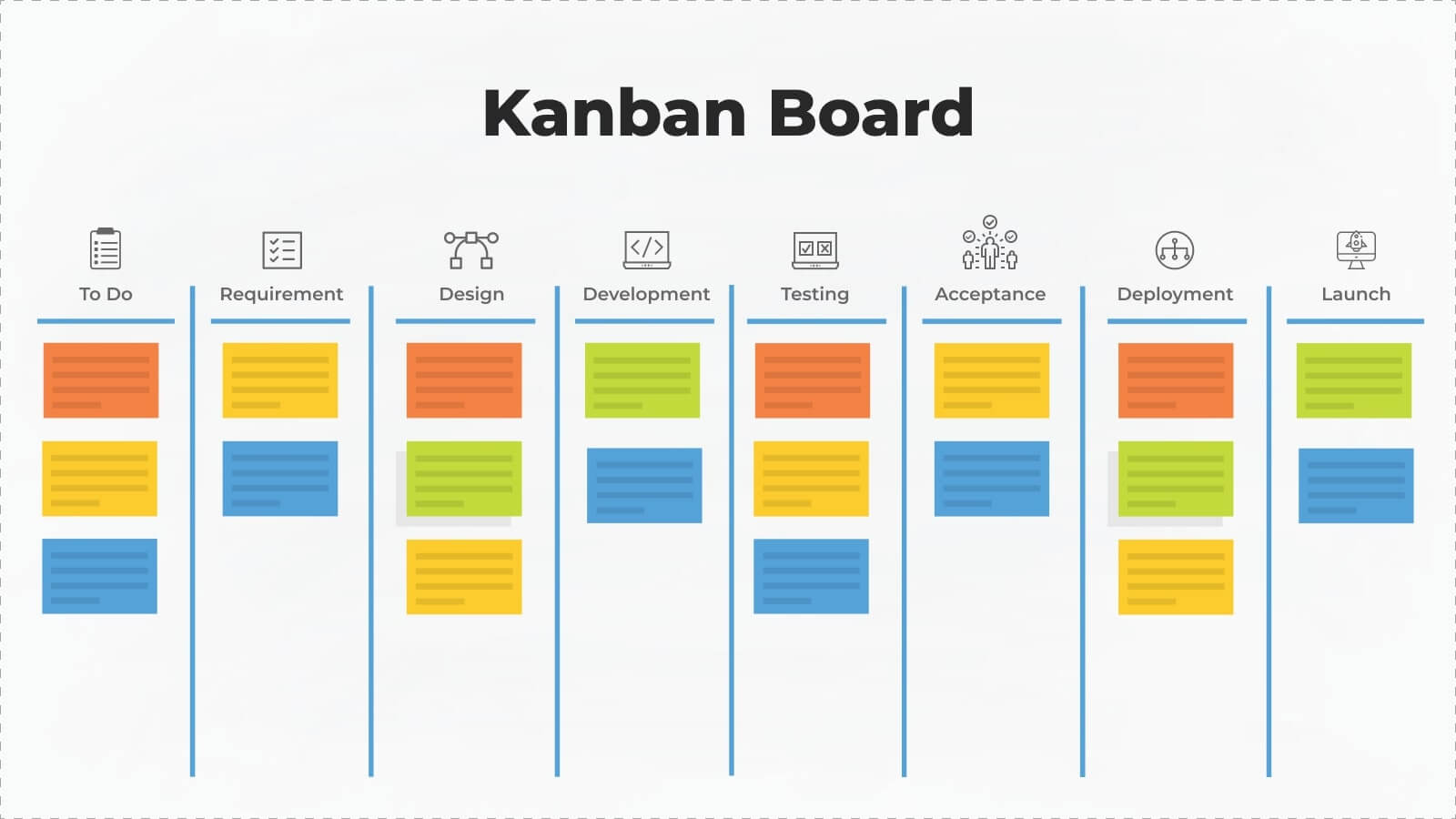
Why would you utilize Kanban in SAFe? The short answer – to be successful. The longer answer starts with why organizations adopt Agile in the first place.
The most successful organizations are the ones that elicit the most value from their efforts and have established best practices and processes to ensure that effort and return is repeatable and scalable. For example, in software development, there have been undeniable advantages and value when clients and end-users are involved in the project. It helps with transparency and visibility on progress and aids in continuous planning and feedback throughout the lifecycle.
Software companies appreciate the idea of delivering value, and more specifically, early in the process, and this has been one of the driving factors behind Agile adoption. This methodology not only mitigates some of the development risks, but Agile project management helps produce higher quality products, happier users, and increased project control.
Most organizations are adopting Agile methodologies to increase team performance, improve project versatility, and achieve better customer satisfaction. However, those who have already embraced Agile will likely find themselves in a position to better respond to market variability and successfully deliver more projects.

how we mentor and remove impediments because we have
1. Manageable Team size. 2. Single funnel and decision making. 3. automation and seamless integration. 4. collaboration. 5. self organising team. 6. time bound cycle. 7. tool. 8. quick daily update.
Scaling Agile SAFely
SAFe, or Scaled Agile Framework, is a means of established practices that allow enterprises to implement and utilize Lean and Agile methodologies in a larger scale and complex scenarios by giving teams the flexibility and autonomy to manage challenges on their own.
If it wasn’t obvious, SAFe’s main advantage is it provides a platform to scale up consistent lower-level best practices to deliver large programs; however, it does much more. It also promotes cross-functional teams to collaborate efficiently when prioritizing backlogs, considering the interdependencies among groups, not to mention faster time-to-market, increased velocity and quality, improved employee engagement, and higher transparency.

And now, Kanban
While SAFe is a way of scaling Agile methodologies in an enterprise environment, Kanban is an Agile framework used to organize, record and implement agile software development. Growing in popularity, Kanban’s appeal reflects the real-time status of the project and the full transparency of work being done. Tasks or assignments are represented visually on a Kanban board, allowing project stakeholders to see the progress of any part of a project at any time. Although physical boards are still popular among some teams, our new remote work reality has further pushed their virtual counterparts’ appeal. Electronic virtual boards are crucial in any agile software development tool for task traceability, easier collaboration, and shared accessibility.

Is it Safe to Use Kanban in SAFe?
In short – yes. SAFe Kanban teams typically operate in a broader context. Imagine multiple agile teams all working towards a solution by addressing the challenges and bridging the gaps among themselves. To help mitigate challenges and ensure continuous and seamless delivery, it’s best to stick to specific SAFe rules, such as the duration of PI, the Kanban guidelines, and electronic vs physical boards.
So how does it work? First, they choose the Program Increment (PI) after considering the dependencies on each other. Next, place tasks in the priority on the board to fulfill each different groups’ needs. Finally, collaborate to make sure that progress is per the set upon agreement. However, it is also important to be flexible where possible and adjust the boards in terms of priority during PI execution to remove blockers.
Kanban in SAFe: A Brief Use Case
Organization XYZ has started multiple dependent projects as a larger, overall program. The organization’s senior leadership wants to have transparency into every project and, so as to gauge the progress of the overall program better. Numerous departments, including Sales, Design, and Marketing, are working together to make the program a success.
In this scenario, the virtual Kanban boards would be an ideal solution, providing detailed visibility into the program and smaller projects. Plus, it can prove helpful in removing blockers and impediments through more timely and informed decision making. The image below illustrates how Kanban boards at the project level (tasks/stories) transfer into the program level (epics/theme).

The Benefits
While we’ve touched on some of the benefits earlier, there are three main benefits an organization can expect from SAFe Kanban teams over other Agile methods.
- Teams Alignment: SAFe helps align the Program Manager’s strategic roadmap with the Development team’s backlogs.
- Higher Quality: Quality isn’t something that can’t be added later; instead, it needs to be built in from the beginning. SAFe ensures that every delivery of your software project is a quality one.
- Transparency: SAFe helps the organization achieve visibility transparency at all levels in the hierarchy; from the C-suite to the junior offices, everyone is authorized to see the backlogs of Sales, Program, and individual teams. Each level in the organization has a clear understanding of the goals aligned to a single objective, eventually building trust.
When to Use Kanban with SAFe?
Every Agile methodology that has advantages associated with it inevitably also comes with disadvantages. Which is why choosing the right framework is so critical. Here are a few points to consider when selecting the right opportunity to use SAFe and Kanban together:
- Bigger Projects & Teams: When an organization is inclined to implement an agile approach across larger, multi-team programs and projects.
- Facing Delays & Failures: Aligns everyone precisely when multiple teams in an organization run their Agile way but regularly face delays and failures.
- Independent Teams: When teams decide or are instructed to work independently.
- Scaling Agile: It helps when an organization intends to scale Agile across the organization and in different departments but unsure about creating new roles and changing the existing ones.
How do you get the most value out of your organizational efforts? Circling back to my point at the beginning of this article, it should by now be clear that value is often related to the frameworks, methodologies, and best practices we have in place. Few have consistently proven to deliver these like Agile.
While Agile continues to evolve, it is essential to continue seeking new ways of utilizing it for organizational benefit and better business outcomes. Its focus on collaboration, self-organization, and the end-user is what makes Agile so appealing to organizations. However, it is how you decide to use it, like combining Kanban and SAFe, that makes Agile not only appealing but valuable.
The above was written in collaboration with Ahmar Siddiqui Mohammad, Director of PMO & Head of Solution Delivery at mobileLIVE.



